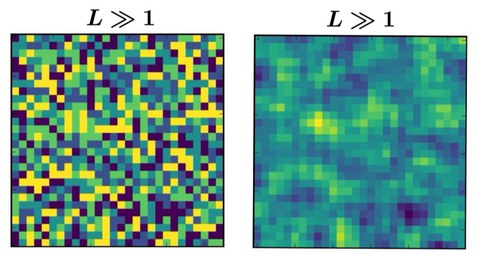Quantitative stochastic homogenization: Approximations by periodic RVEs in nonlinear elasticity
Polycrystalline composites, reinforced rubber and biological tissue are examples of random heterogeneous materials (RM). The properties of RM on very small length scales are described by statistical information, e.g., distribution of grains/inclusions, geometry, etc. Oftentimes RM feature a peculiar effective behaviour on large length scales, which is naturally affected by the material’s microscopic composition. In fact, the understanding of this relation allows us to explore microscopic designs for materials with optimal macroscopic properties. Statistically homogeneous RM on large scales typically exhibit roughly a deterministic behaviour. This fact allows for a significant reduction in computational complexity – the resolution of highly varying microscopic properties is replaced by the treatment of a deterministic homogeneous medium. This observation is the basis of the well-known Representative Volume Element (RVE) method. In this method suitably chosen representative samples of the material are used to gain approximate information about the effective constitutive laws. Despite its enormous popularity in computational mechanics some basic analytical and practical questions about this method are still not clarified, e.g., convergence rates, size of RVE, boundary conditions. The rigorous mathematical analysis of the RVE method has recently become one of the central aspects in the field of Quantitative Homogenization (QH) initiated by [Gloria, Neukamm, Otto; Inventiones mathematicae 2015]. In this paper the first optimal result about the convergence of the RVE and Monte Carlo approximations is presented, where the applied methodology mostly complies with linear, scalar and elliptic problems. In this project we develop a quantitative theory for geometrically nonlinear elastic composites with microscopic random properties, which are highly relevant in mechanical applications. In particular, we use analytical techniques from regularity theory to conclude information about the convergence rates. The analysis of the nonlinear (and nonconvex) model is challenging and interesting – even the classical qualitative homogenization results in this case are significantly more involved than the linear theory.
Projektlaufzeit: 06/2018 - 06/2021
Drittmittelgeber: DFG

